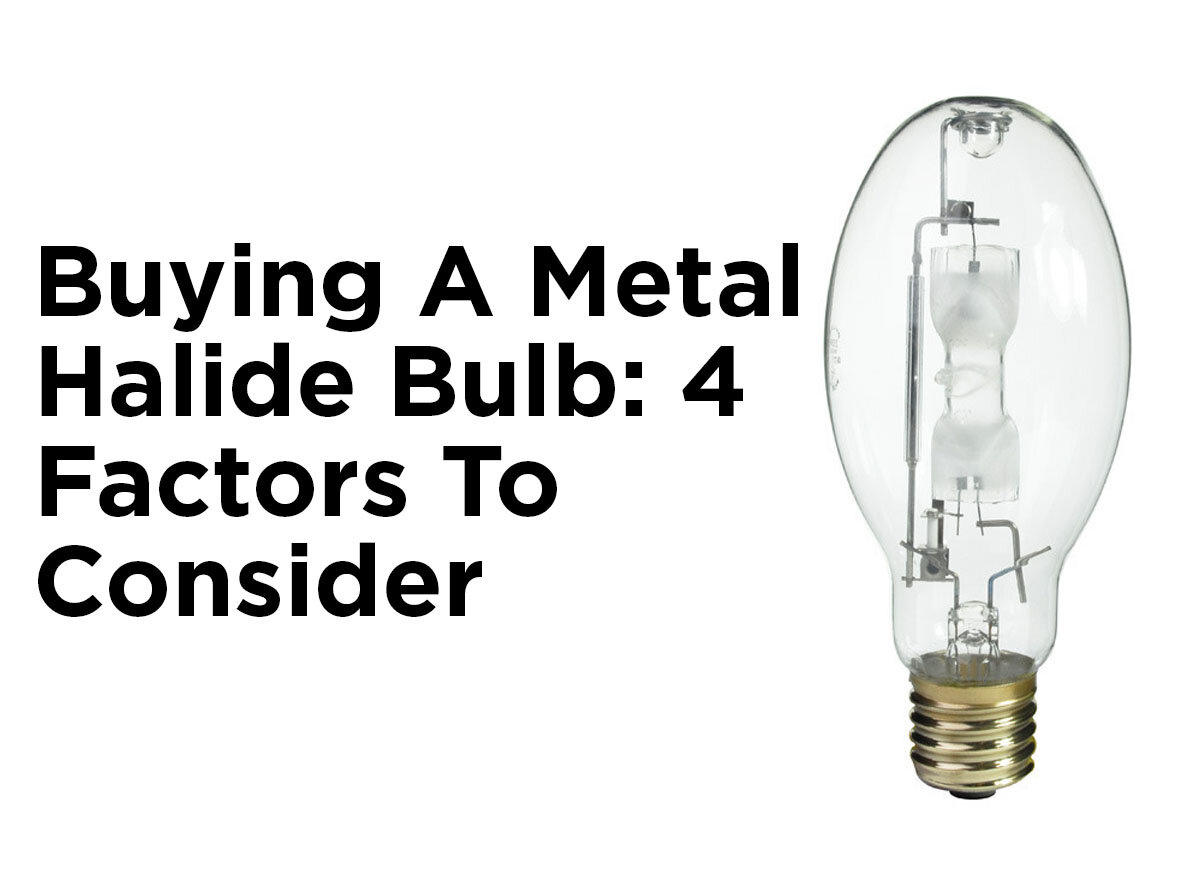Conversion Bulbs: HPS vs Metal Halide Bulbs
“High pressure sodium,” “metal halide,” and “conversion bulbs.” Any of these ring a bell? No? No worries; we’ve got you covered. So what are the differences between these bulbs and when do conversion bulbs come into play? First things first. Metal halide bulbs, sometimes shortened to just “MH” and high pressure sodium bulbs, sometimes shortened to simply “HPS”, are in a family called High Intensity Discharge bulbs, or “HID” for short. The bulbs in this family produce a large amount of lumens, which is why they’re used for public spaces, like stadiums. This family also includes mercury vapor bulbs and the lesser-used low pressure sodium bulbs, or “LPS.” Now, there are those who wouldn’t necessarily group the LPS bulbs into the HID family, but for all intents and purposes, they’re part of the family. While we won’t get into the minute details of how these bulbs work, we will give you a snapshot of how these bulbs create their intense light.
High Pressure Sodium
Plantmax PX-LU360MH
As the name suggests, there’s lots of pressure in these bulbs, and, well, they contain sodium, but in a liquid form. When electricity pulses into an HPS bulb, to the tune of 2,500 to 3,000 volts for a duration of around 1 microsecond, an arc is created within the ceramic arc tube in the bulb and the heat this arc generates causes more sodium to vaporize and enter the arc. As temperatures increase, more and more sodium enters this arc, until eventually giving off the yellow light we’ve come to know. Also, this arc tube gets hot. Really hot. We’re talking about temperatures around 1,300 degrees Celsius. HPS bulbs are typically found in street lights and highway lights, and their yellow light serves a very distinct purpose: to attract fewer bugs. While these bulbs are used for public lighting, they’re not the best choice for task lighting, as they have a low CRI (color rendering index) and give off very yellow light.
Metal Halide
GE ConstantColor Chromafit 93357
Unlike their HPS counterparts, metal halides are actually very good for task lighting for two reasons. One, they usually have a very good CRI, and two, they have a crisper color and white light. Both of these traits translate into making objects look better. For example, let’s say you’re at a Ferrari dealership. You know why that car looks so great, besides the fact that it’s a Ferrari? That’s the metal halide bulbs that have your jaw on the ground. The arc tube in an MH bulb is composed of quartz glass and contains mercury and combinations of metallic halides, which are what produces light. The arc tubes operate at very high temperatures and are under severe thermal stress. This is why either one or both ends of the tube are coated with a reflective powder designed to balance the temperature fluctuations and reduce the stress. Look for MH bulbs in warehouses, car dealerships, parking lots, and stadiums.
Conversion Bulbs
Now here’s where conversion bulbs come into play. Let’s say you’re using a metal halide fixture during the vegetative stage of your hydroponics grow, but you want to switch to an HPS fixture during the blooming stage. Instead of using two separate fixtures, you can just pop in a conversion bulb. Conversion bulbs offer you two big advantages. One, they save you money by being versatile enough to switch between fixtures. Two, if you’re strapped for space in your grow area, these bulbs give you the best of both worlds by not requiring two separate ballasts, but still giving you the advantages of both fixtures.
Have any further questions we didn’t address here, or want to share what types of bulbs you use and why? Then drop us a line on Twitter or Facebook!








